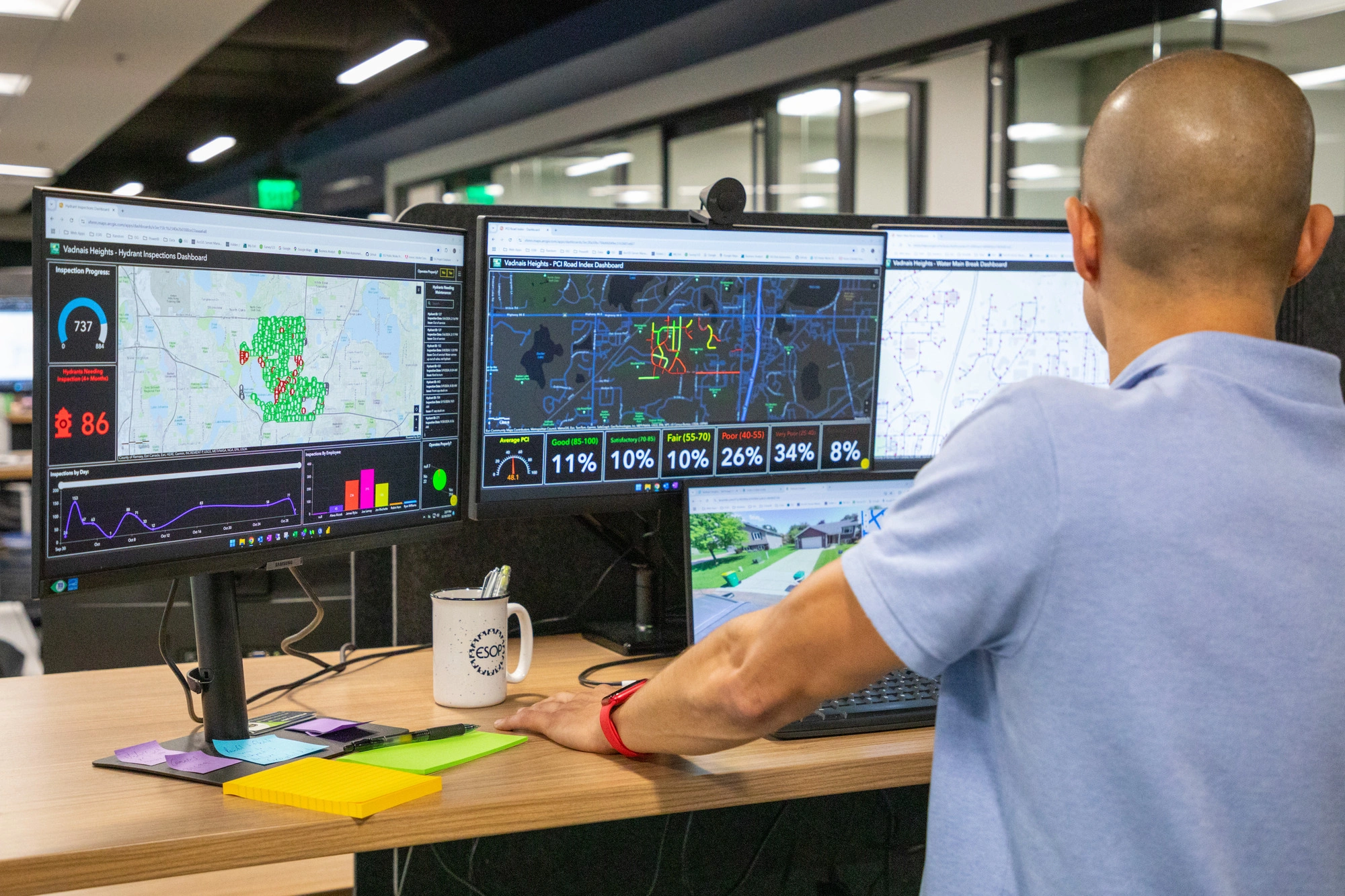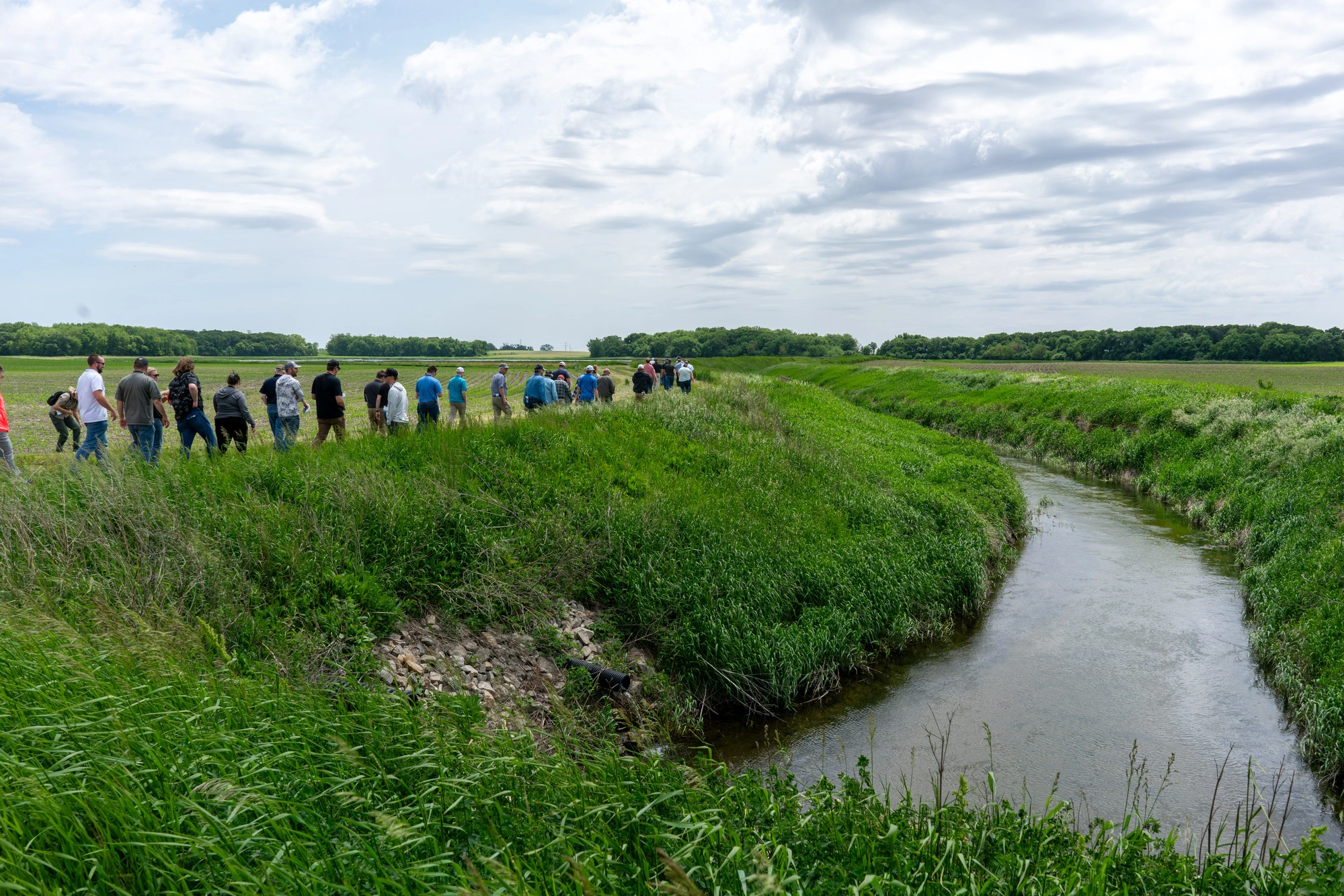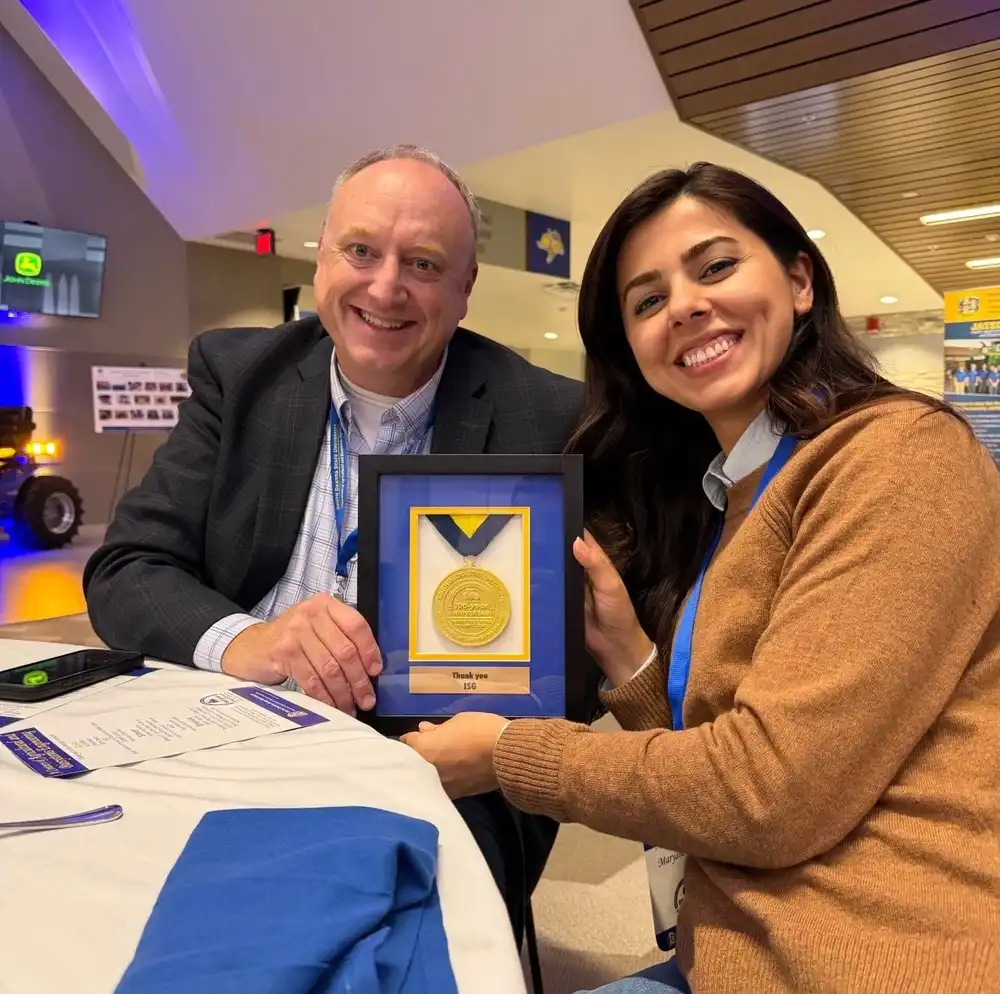Collaboration Opportunity Breaks Work Silos and Unifies Teams
Architecture, engineering, and construction (AEC) professionals are not only passionate about the projects they are assigned to, but also their specific field of work. While individuals may focus on the work in front of them and their design or engineering, understanding how their decisions affect team members’ work is critical for the projects’ and ISG’s success.
There is no better way to demonstrate how one discipline affects another than by taking team members from each discipline to the place where they can see their work come to life: a project site. Here, everyone sees things normally unseen when in the office or buried in plans.
Recently, ISG gathered new graduates, designers, and engineers at the Meskwaki Community Recreation Center project site located near Tama, Iowa. The purpose of the site visit was to allow the group to collectively see and experience how their discipline influences other design decisions and how the elements they influence are interconnected in the final constructed product. For example, a plumbing wall in a locker restroom has an unimaginable amount of intertwining piping, insulation, low and high voltage wiring, and ducts, which all must be coordinated in the Revit model and final construction drawings. The wall itself must have internal dimensions to fit the assemblies, while not subtracting from usable space. Design requires focus and communication. Designers and engineers across all disciplines must remember who views the plans and ensure that they are readable, constructable, and efficient.
Learning starts in the classroom, but it doesn’t end there
While in school, students’ coursework typically focuses on one discipline, but seldom is there a course that teaches how an assembly of various disciplines creates a building or how design impacts occupants. As a result, it is up to industry experts to mentor those early in their architecture, engineering, and construction (AEC) careers and teach the importance of understanding and collaborating with other disciplines.
In understanding everyone’s role and how they interact with one another, team members ultimately become building technologists—they understand the intricacies and details of each discipline’s design. Gaining a holistic understanding of the design and construction processes, each ISG professional has a unique approach to learning and designing the best solutions for clients. In doing so, we unify our design teams, creating a feedback loop of how they can improve processes and exceed client expectations.
Investing in the next generation
By inviting young professionals to project sites during construction and coaching them throughout their careers at ISG, up-and-coming experts gain increased confidence in their design capabilities and future client interactions. Mentoring during early construction phases, when the elements are exposed and easily recognizable, motivates individuals to continue learning. These timely experiences ensure that ISG continues to evolve through hands-on learning, resources, and mentorship.
Taking the time to experience on-site activities can lead to epiphanies for new designers and engineers, realizing how their office work directly connects to the realities of what is constructed. Days spent in the field or on a project site create a newfound appreciation for other disciplines, motivating teams to work smart and work together. Architects, engineers, and designed across all disciplines must remember our calling card and that value is measured by the many viewers of our final product—plans and specifications. They must be comprehensible, constructable, and efficient to deliver functional, creative solutions.
Key Takeaways
- The building technologist mentality delivers holistic, dynamic, and dependable results to clients.
- A designer does not have to also be an engineer—and vice versa—but should understand how they impact one another and how to communicate that understanding.
- Mentorship of the next generation of AEC experts encourages the firm to evolve positively and to provide coordinated, innovative solutions for clients.




Related Articles

.webp)
ISG Recognized as a 2025–26 Emerging Professional Friendly Firm for the Fourth Consecutive Cycle
ISG has been honored as a 2025–26 Emerging Professional Friendly Firm by AIA chapters in North Dakota, South Dakota, Wisconsin, and Minnesota in recognition of its commitment to fair compensation, licensure support, mentorship, and growth for early-career architects.

.webp)
Capturing Value From Every Drop: Reflecting On The Drainage Water Recycling Economic Analysis Report
Explore how ISG’s economic analysis of drainage-water recycling reveals the value in every drop, from yield gains and cost savings for producers to nitrogen reduction benefits for downstream communities.











